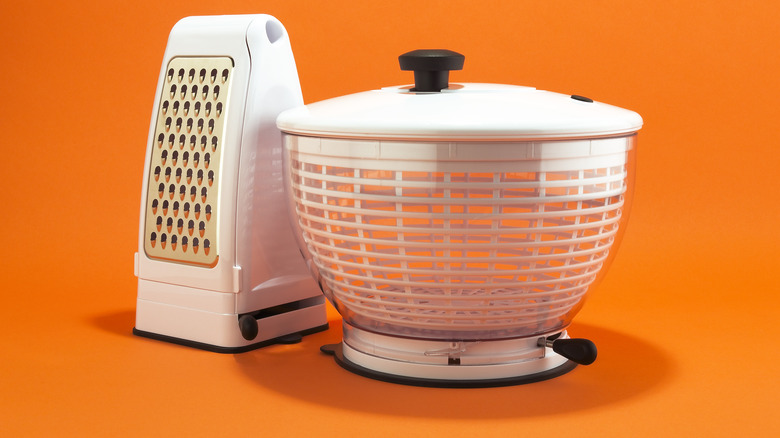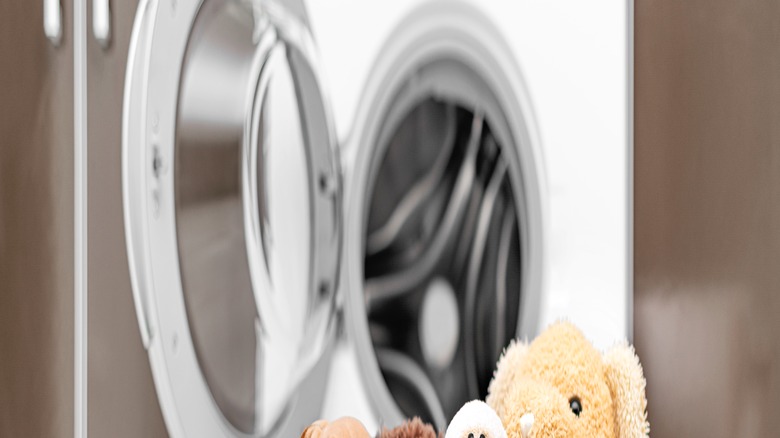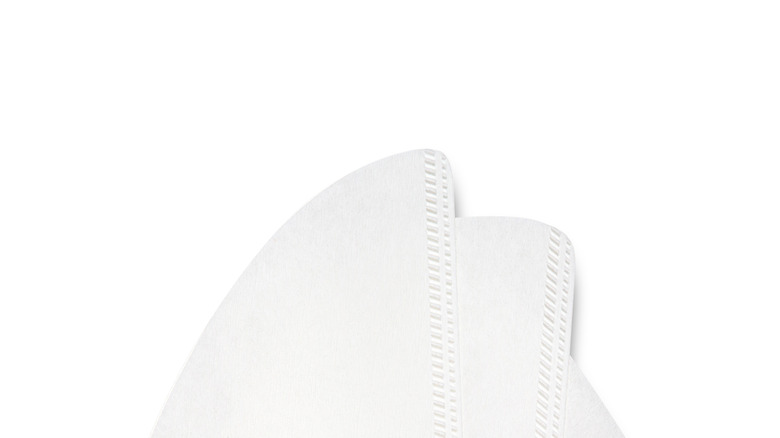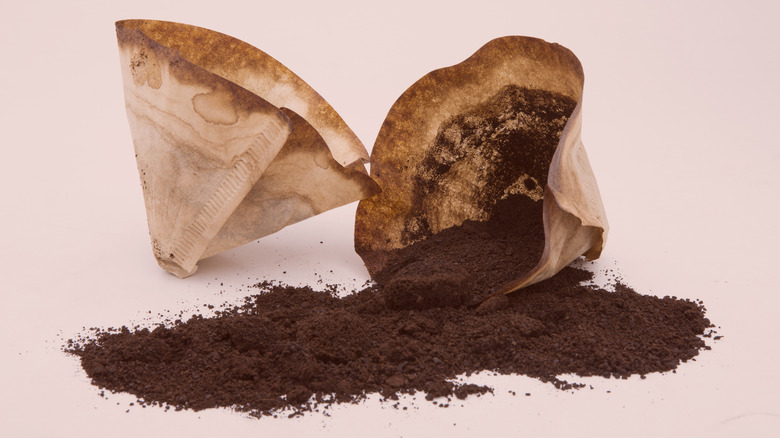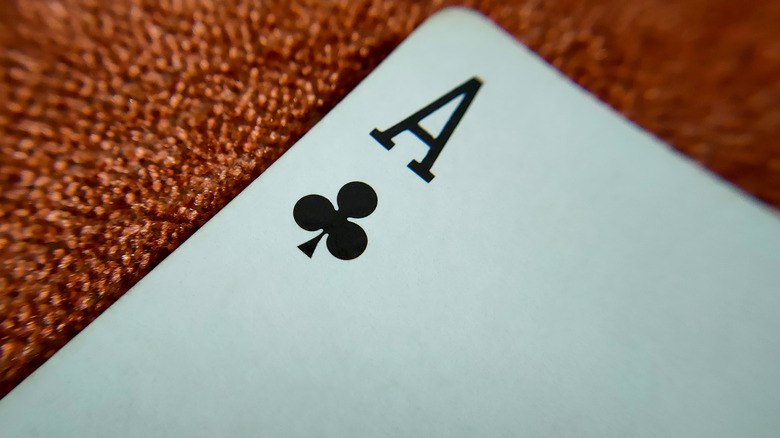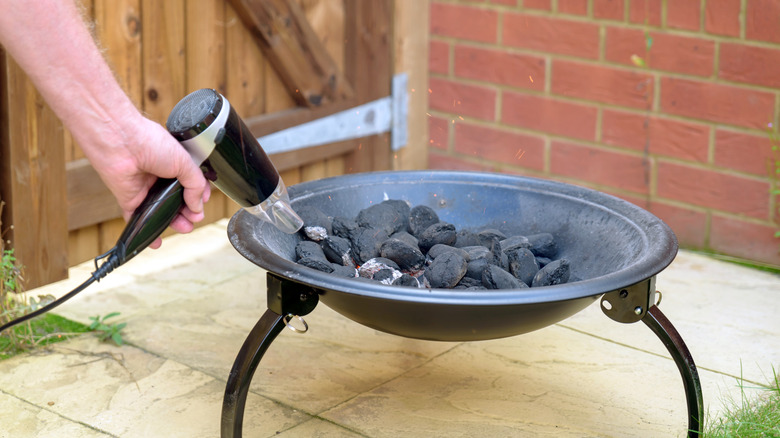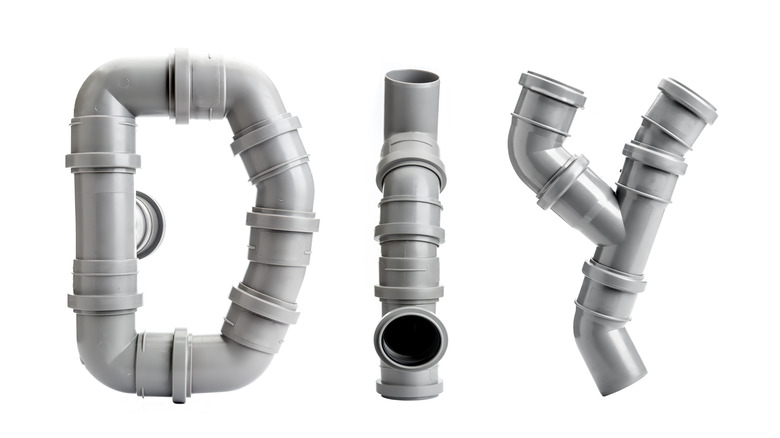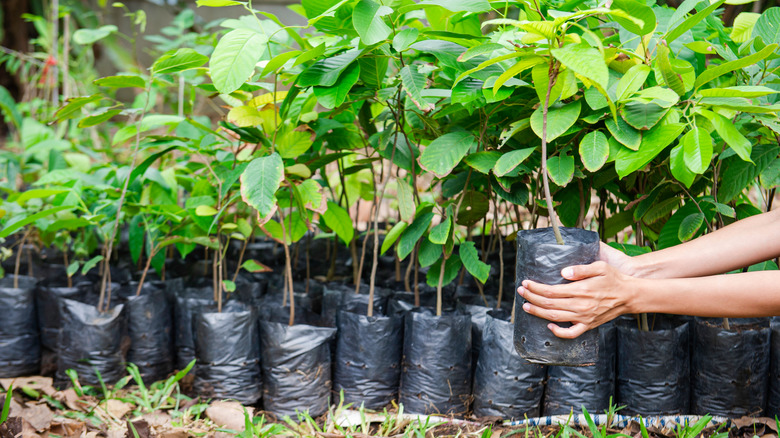12 Home Products That Are Best At Jobs They Weren't Meant For
We know the world's great problems, like cognitive bias and the proliferation of kale, are not solvable because otherwise, someone on the internet would have figured it out by now. At last count, there are officially more lifehacks than there are observable objects in the known universe. Most, if not all, of them, involve using things wrong on purpose. "Gloves," the lifehacks might say, "can be made useful again by cutting off the fingers and using them to protect things like chisels."
This is, of course, ridiculous. If we know anything about lifehack-using people it's that they would never destroy a pair of gloves with perfectly usable fingers. Also, how many chisels do you own, anyway? To be fair, this is actually a pretty cool hack from Popular Woodworking, but you get the idea: hacks usually have you using things wrong, and happily so.
But there are alternatives. One is to take things that are just kind of bad at their jobs and find things they're good at, as your manager at Chipotle told you right before he recommended that you try art school. When you're finding better uses for things, you have some choices: You can repurpose things that are already fairly useful, but better at something else. You can use things that were trash only a moment ago. Or you can figure out something to do with some stuff you shouldn't have bought in the first place.
If this sounds kooky, rest assured that it's not. Jeffrey Baumgartner says that companies should even plan for this sort of off-label use in order to expand into new markets (via Creative Jeffrey). Psilocybin mushrooms can be used to treat migraine, for example, possibly by making you forget that your head exists.
Make hash browns with a salad spinner
To say that a better use has been found for something doesn't mean the original use isn't perfectly valid. (We're not still talking about psilocybin.) For example, it turns out that salad spinners are good at their intended jobs, but it turns out that they are absolutely indispensable at other jobs.
If there is one a priori truth we all agree on it's that potatoes are more popular than salads because of (among other things) hashbrowns. If you've finally admitted the truth about your lack of will to centrifuge lettuce, maybe it's time to see if this wonderful device can't also do something useful in terms of spinning potatoes. Fortunately for the next paragraph, it certainly can!
Home cooks eventually discover that you can't cook wet things at high heat because the water basically keeps things at 212 degrees Fahrenheit until it evaporates. This has been the ruin of many a poor hashbrown, which needs much higher cooking temperatures to actually brown, and that's where you get the delicious Maillard reaction. The "nutrition enthusiast" at The Harvest Garden, Deborah, has a solution: Put your hashbrowns in a salad spinner and dry them out before cooking. Then just add salt, pepper, onion powder, garlic powder, and Lawry's Seasoning Salt (which turns out to also be mostly salt, pepper, onion powder, and garlic powder). Finally, brown them.
Spin dry your laundry with a salad spinner
Everyone eventually tires of the food service industry, with its inconvenient hours and wet lettuce. When this happens to salad spinners, they move on to the laundry room, where they excel at speed-drying your delicates. This is useful on those occasions when you really need your delicates a little drier, like, right now, according to The Kitchn. This silk-spinning strategy keeps you from putting too much weight on your drying rack, which is also apparently quite delicate as well. It also has the benefit of helping you avoid puddles that might otherwise form below your delicates, and that's a self-evidently useful thing about which we do not find the need to elaborate.
One word of caution: While you can happily move from hashbrown spinning back to salad spinning with hardly a pause, this isn't necessarily so with delicates. Depending on the nature of your delicates, you might want to stick in a thorough washing stage before you rocket back to arugula. The good news is that, after a wash, salad spinners practically dry themselves.
Lint-free cleaning with coffee filters
Your coffee filters were useful when you bought them in 2009, before the Keurig that made your eco-conscious girlfriend leave and which you replaced, too late, with a French press (the Keurig, not the girlfriend, probably).
You had a feeling they'd come back around someday (the coffee filters, not the girlfriend), and that day is here. It turns out that coffee filters are pretty good at cleaning certain things because they are relatively lint-free and can withstand long contact with water, according to First for Women. (Why this is a particular issue for women is unclear; there might be a clue in the site's verticals, which include Diet, Fashion and Shopping.) These properties, along with a mild abrasiveness from what Jonathan Gagné calls "creping," make them a good candidate for windows, glasses, and perhaps TV and computer screens. (They are a little abrasive, so test before you go full in.)
Gagné's hyper-focused blog about filter coffee is a reminder of what's great about people and their fixations, so long as they don't talk to you on the subway. (He also has an astrophysics research blog, because of course he does.) Gagné gives some other clues to how coffee filters might help with cleaning, having carefully measured some high-end coffee filters for thickness (between 120 and 242 micrometers), which probably contributes to their absorptive abilities and durability.
By the way, you might be harming or helping yourself by using coffee filters for their intended purpose. A 2007 review of research found that diterpenes, which are filtered out by paper coffee filters, both increase cholesterol levels and provide healthy antioxidants (via Clinical Nutrition and Metabolic Care). Diterpenes probably have no effect on a filter's ability to remove spit-take residue from your computer screen.
Make potty training less messy
When you think of coffee filters, your child's poo is not necessarily the first thing that springs to mind. But it should be, and after today it might be. Parents who've spent any time at all trying to clean, err, stuff out of a potty already know where this is going. Apparently, lining a potty with a coffee filter (or seven coffee filters, if you ask us) makes cleanup much easier. On the other hand, writes Asha Dornfest of Parent Hacks, the most sensible thing might be to simply line it with toilet paper. It's sort of difficult to believe that no one has thought of this before.
Dornfest then undermines this insight by suggesting the use of flushable wipes, which most experts agree is not actually a thing. Wipes contain polymers or are produced by manufacturing processes that make them so strong they will inevitably cause sewer clogs, says the
International Water Services Flushability Group, which, against all odds, turns out to be real. Others disagree. Scientists' arguments against flushing wipes are "designed to fit their ideology that only pee, poop, and paper should be flushed," according to Association of the Nonwoven Fabrics Industry president David Rousse (via Undark), stretching the usage of "ideology" well beyond its ability to contain poop.
Coffee filters do not require this level of strength, and so do not necessarily create the same problems for sewer systems. If you try it, don't let us know how it goes.
Use coffee filters to keep garden soil in place
People everywhere are using gravel, packing peanuts, and who knows what else to keep potting soil in their plant pots, when all they really needed was a few of the 1500 coffee filters they've been storing since WKRP In Cincinnati went off the air. According to the Laidback Gardener, the conventional wisdom calling for a drainage layer of pot shards or gravel in the bottom of a plant pot is wrong, and lining the bottom of the pot with a coffee tilter is the way to keep the soil in.
The Laidback Gardener blog also suggests using used coffee filters, but leaving the actual coffee grounds in might be a bad idea. Lots of gardeners recommend using coffee grounds as a directly applied slow-release fertilizer or water-retaining soil amendment for potting soil (via GrowVeg). There is disagreement, however, on whether this practice will increase the soil's acidity to harmful levels, so as always, keep an eye on your soil's pH.
Extreme repurposing: duct tape canoes
Yeah, so you already knew that duct tape was useful for things beyond taping ducts. In fact, it's not clear to us that it's even used to tape ducts anymore, given the foil, mylar, and other tape options available. In fact, Mr. Handyman argues against using traditional duct tape for ductwork, and who can argue with someone named "Mr. Handyman"? Some brands have even given up on this ductwork sham, including Duck Tape... who might have been prescient in associating duct tape with buoyancy. Enter the duct tape kayak.
Here is a truly superior use for duct tape. Typically made of layers of polyethylene, fabric, and rubber-based glue (via RS Components), duct tape seems ideally suited for improvised watercraft. After all, polyethylene is what rotomolded kayaks are made of. This results in a very durable kayak, although the material does break down readily in sunlight.
Outdoor Revival has everything you need to know when building your own duct tape kayak (including paddle), except how to swim, which might turn out to be pretty important. Note that the post is from 2016, so the prices are from well before pandemic-era construction materials became previous nonmetals. For example, the author lists the price of four 10-foot, ½-inch PVC pipes as $6, but Lowe's currently has them priced at $5.53 each. Kayak prices haven't increased nearly this much (you can get a reasonable rotomolded sit-in kayak from Academy Sports for $230, an inflatable for $99, or a sit-on-top that resembles an oblong Tupperware lid for about $105, so it might be about as cheap to buy one. But this does seem like a great project to do with kids on a weekend, assuming you have lifeguard training.
Playing card shims
As useful habits go, gambling is probably one of the least successful. You might remember that playing card-based college drinking games had high opportunity costs. Well, actually, you probably don't remember it. And we promised to never bring up your flirtation with reservation casinos back in the 90s. Well, if you didn't pawn your table saw during those lean times, we have just the use for your old playing cards: woodworking shims.
This trick is nothing new and is positively genius, but you rarely see it in the wild. Nick Ferry shows you how to use playing cards as shims to increase the drilling depth of a drill press by 11/1000ths of an inch at a time. You can also apply the same principle to table or bench saws that don't have micro-adjustment mechanisms (via Wood Magazine), and probably other tools as well. In woodworking, this method of incrementally working your way towards a correct measurement is referred to as "sneaking up on" it. Just remember that you won't be sneaking up on that inside straight if the four of hearts is out in your garage when the hand is dealt.
Use a hair dryer to start a fire
Hair dryers are fine, if you're still into that sort of thing. It is, after all, the most efficient way to make your hair bigger than a bread truck. But if you've tired of staring at yourself in the mirror while you damage your hair and scalp just to achieve unruly hair, we have a better idea: set things on fire.
We know what you're thinking: "Set something on fire" is our stock answer. Well, okay, but not just anything, of course. At the moment, we're thinking of those perfect little carbon gems of destruction that are designed to be destroyed by exothermic rapid oxidation: charcoal.
This has nothing to do with your hair, and you'd be well advised to keep it that way. The idea, thanks to the folks at Instructables, is to use the hair dryer to blow oxygen into the smoldering briquettes, just in case you left your bellows in your other pants pocket. Even Bon Appetit uses this trick, and you know those people don't mind spending $400 on a Japanese hibachi oxygen infuser or some such thing.
Make a cup holder with PVC pipe
Of course, some things simply aren't useful in the first place. These include kale, redundant demands for bill payment, and ironing boards. But the most prominent of this collection of incipient garbage is, of course, the PVC pipe cut-off. There's nothing wrong with them necessarily, it's just unlikely you'll ever be able to properly use a piece of that length unless you are a plumber. Fortunately, scraps of PVC can be used for just about anything other than their original purpose (which generally requires full-length store-bought scraps or pieces 11/16ths of an inch longer than yours). The best of these uses, obviously, is making cup holders for things that idiotically don't already include cup holders.
If this scenario seems unrealistic, consider the Sears Suburban riding lawn mowers made in the 1970s. As inconceivable as it is today, they were generally not equipped with cup holders. According to the Bureau of Nonsense Statistics, the last time an American mowed a lawn without a beer was during Prohibition, and even then, there was probably a flask hidden somewhere. The only reason we don't drink out of beer steins when mowing lawns is the extra beerless time it would take to decant from can to stein. Also, our cup holders might be too small.
Anyway, an Instructables author, obviously a college student, shows you how to add a PVC cup holder to a sofa on your lawn. But this ingenuity can be adapted to mowers, truck beds, boats, motorcycles, baby strollers... your imagination is, as always, the limit.
PVC organizer
While not spilling beer is a noble cause, a more spouse-friendly use of PVC scraps is to organize and store things. Anything that will fit in a PVC pipe, really, except for things like sink water and toilet contents, which are meant to pass through PVC pipes unstored. We're mostly thinking about tools, craft supplies, and other things that benefit from being stored upright.
Small cut-off scraps glued in a pan pipe arrangement can be used to store pencils, scissors, screwdrivers, and the like. But you can double your PVC cleanup efficiency by storing things that require two scraps per storage item, like the garden tool organizer featured by the Owner Builder Network. This is great for avoiding those cartoon injuries where you step on the end of a rake and it smashes you in the face. OBN also shows you how to label your PVC organizers, in case all the beer has caused you to forget what a shovel is.
Landscaping cloth finally pulls its weight
Among the things that are supposed to be useful but turn out to be utterly useless, landscaping cloth ranks pretty high. Depending on your local grass and weed varieties, unwelcome seeds could simply see the stuff as a means of helpful root aeration. But while it can't keep stuff out of your dirt, it turns out to be surprisingly effective at keeping your dirt out of other stuff. It does this in the form of homemade grow bags, and not just the ones your cousin has in the crazily bright, skunk-scented basement of his. They're also useful for tomato plants and many others.
Don't take our word for it. Check out this tutorial from the Empress of Dirt. (If you thought Mr. Handyman was tough to argue with, how are you going to overrule the Empress of Dirt?) It's the simplest form of sewing you can imagine, and the product is actually useful, unlike those 13 sewn grocery store bag dispensers your crafty teenager keeps making.
Three ring binders for cable management
Remember that time you decided to print out everything you could find online about Bachelor In Paradise's John Paul Jones, only to discover after printing 1200 pages that he shares his name with a member of Led Zeppelin? No? Well, trust us, it happens, and when it does you end up with lots of three-ring binders that you bought and no longer need. Solution? Rip them to pieces. Then use some of the pieces to organize all the wires running across your desk to seven or eight printers.
You can also simply pick some up at a local thrift store for pennies.
Youtuber Swashin shows you how to do it. Sort of. You basically want to extract the metal three-ring mechanism from the binder, and mount it to the underside of your desk to run wires through. How you accomplish it is less simple. Swashin ended up with, in his own words, "blood spewing all over the place" after trying to pry the vinyl binder from the metal part with a pocket knife. The accepted way of removing rivets is actually to drill them out, which will result in less blood spatter, assuming you remember to secure the binder while drilling so that it doesn't become something like that medieval weapon that vaporized people in the 1999 Joan of Arc movie The Messenger.
Happy crafting!

